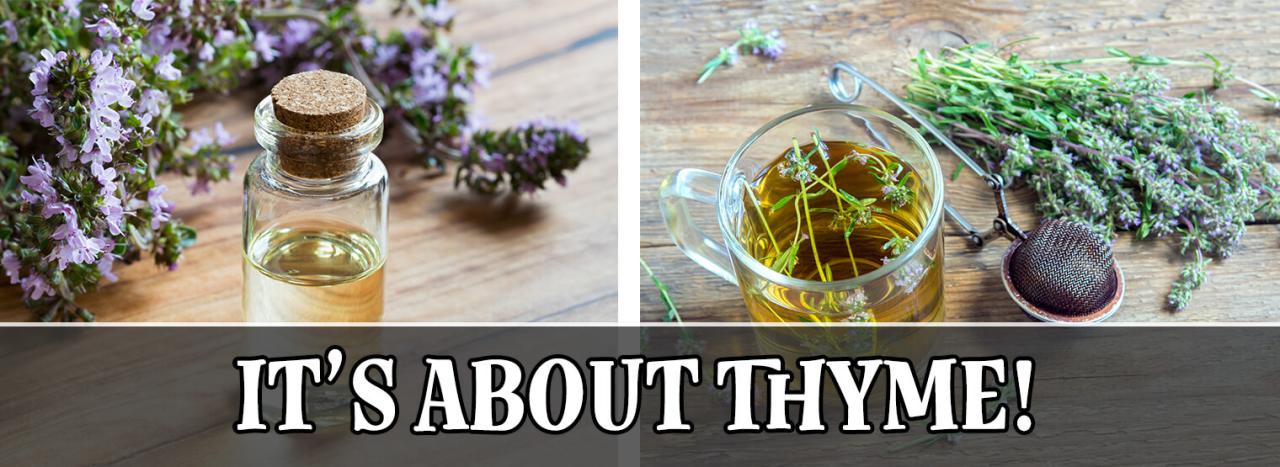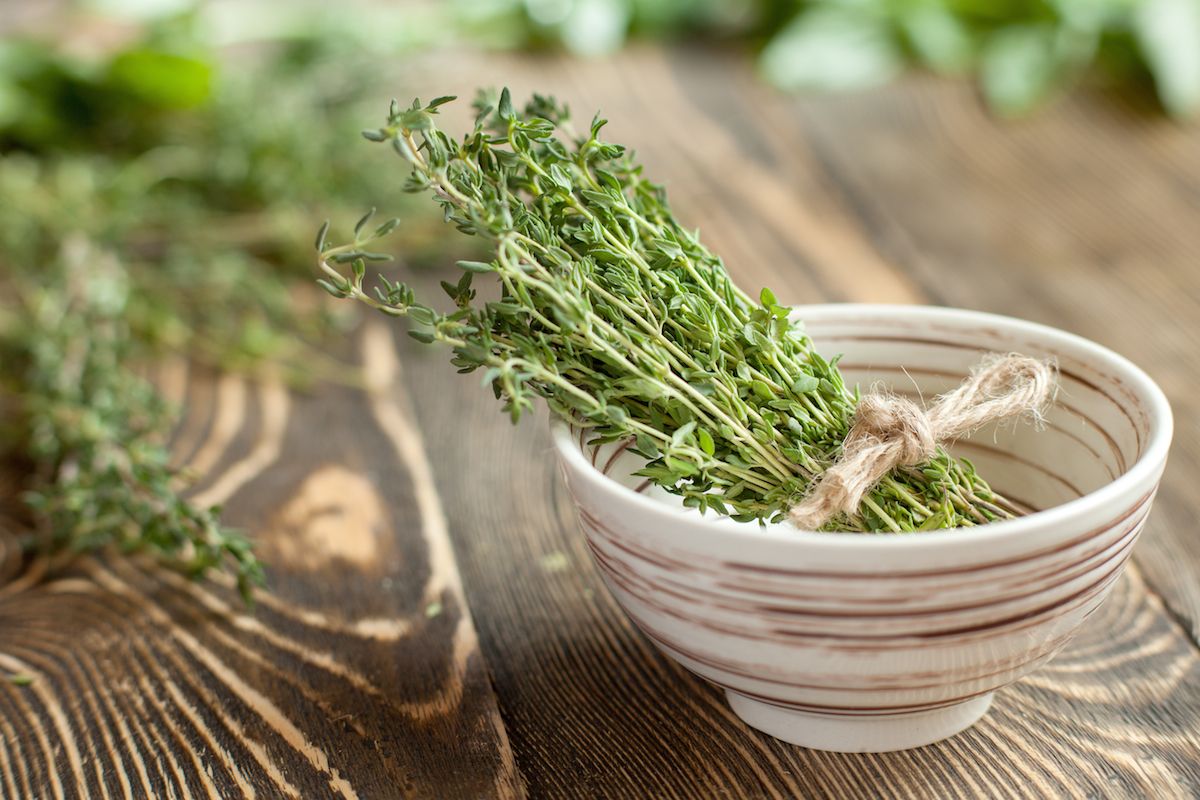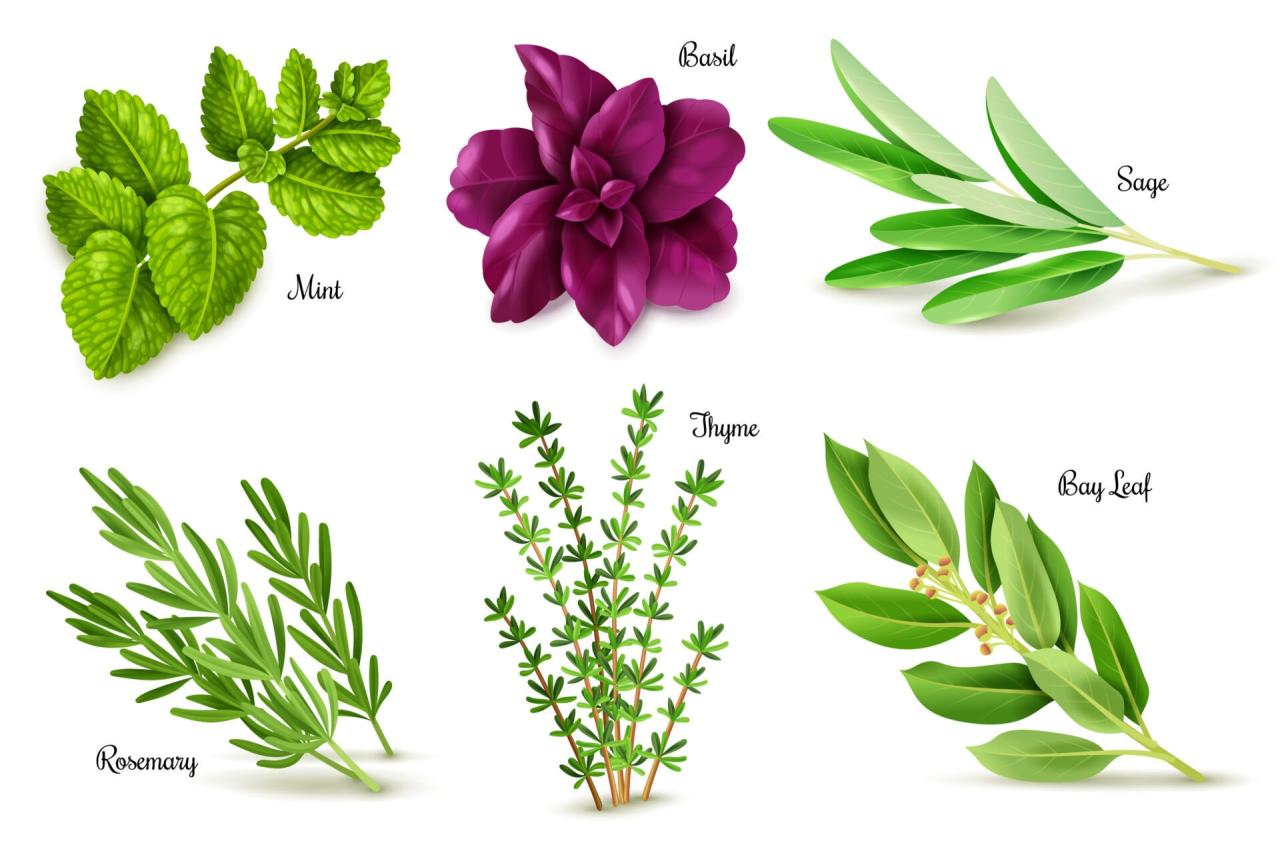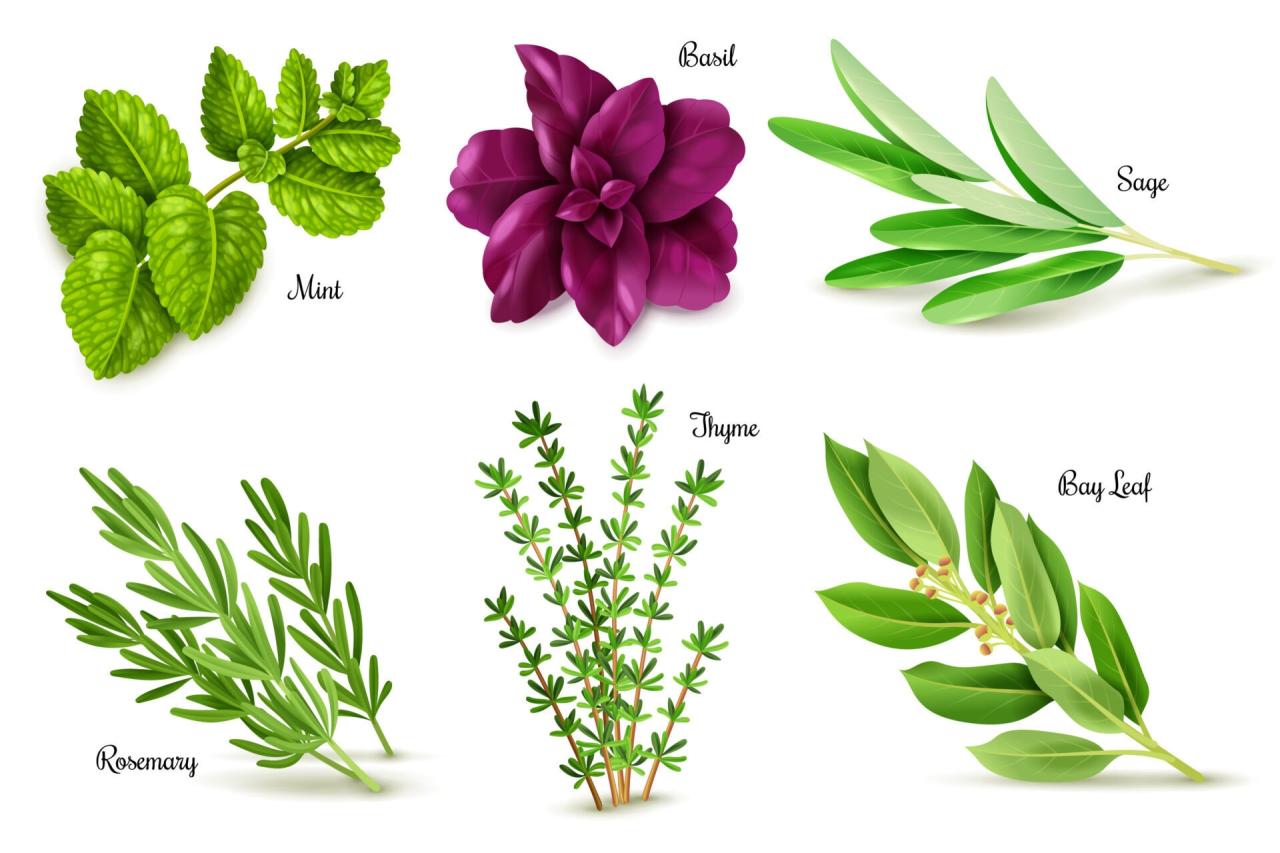Why Thyme Piece Should Be Your Go-To Herb for Flavor – Why Thyme Should Be Your Go-To Herb for Flavor? It’s a question that deserves a resounding answer: because thyme is a culinary chameleon, effortlessly transforming dishes from ordinary to extraordinary. With its distinctive aroma and versatile flavor profile, thyme can elevate everything from hearty stews to delicate desserts, adding depth and complexity to each bite.
This humble herb, often overlooked in the kitchen, is a culinary treasure waiting to be discovered.
Thyme’s unique flavor profile sets it apart from other herbs, offering a distinct earthy and slightly citrusy note. Its versatility allows it to be paired with a wide array of ingredients, making it a staple in kitchens around the world.
From traditional Mediterranean dishes to modern culinary creations, thyme’s presence adds a touch of sophistication and depth, enhancing the overall flavor experience.
Thyme’s Unique Flavor Profile

Thyme, a member of the mint family, is a culinary powerhouse, offering a distinct and versatile flavor that can elevate any dish. Its aromatic profile is characterized by a warm, earthy, and slightly peppery note, making it a beloved ingredient in cuisines around the world.
Thyme’s Flavor Compared to Other Herbs
Thyme’s flavor stands out from other herbs due to its unique combination of earthy, citrusy, and slightly minty notes. Unlike rosemary, which has a more pungent and pine-like aroma, thyme is more subtle and nuanced. It is also less assertive than oregano, which has a more pronounced and slightly bitter flavor.
Thyme’s versatility allows it to complement a wide range of dishes, from savory meats and vegetables to light salads and even desserts.
Thyme’s versatility in the kitchen is undeniable, adding a distinct, earthy flavor to everything from roasted vegetables to hearty soups. But did you know that thyme can also be used to create a delightful, aromatic tea? If you’re looking to expand your herbal repertoire, consider growing your own thyme.
And while you’re at it, why not explore the world of propagating African violets? Propagating African Violets in 2024: What You Need to Know offers a comprehensive guide to this rewarding process. Once you’ve mastered the art of propagation, you’ll be well on your way to enjoying the fresh, vibrant flavors of thyme in your culinary creations.
Thyme’s Culinary Applications
Thyme’s flavor profile makes it a versatile ingredient in various culinary applications. Its earthy and slightly peppery notes pair well with rich and hearty dishes, such as roasted meats, stews, and soups. Thyme’s subtle citrusy undertones add a bright and refreshing element to lighter dishes, like grilled fish, salads, and sauces.
- Roasted Chicken with Thyme and Lemon:Thyme’s earthy notes complement the chicken’s savory flavors, while the lemon adds a bright and citrusy touch, creating a balanced and aromatic dish.
- Tomato Soup with Thyme and Basil:Thyme’s earthy and slightly peppery notes balance the sweetness of the tomatoes, while the basil adds a fresh and herbaceous element, creating a complex and satisfying soup.
- Grilled Salmon with Thyme and Garlic:Thyme’s earthy and slightly peppery notes complement the salmon’s rich flavor, while the garlic adds a pungent and savory touch, creating a delicious and aromatic dish.
Culinary Applications of Thyme

Thyme, with its earthy, slightly citrusy, and subtly sweet flavor, is a versatile herb that can elevate a wide range of dishes, adding depth and complexity to both savory and sweet creations. From appetizers to main courses, desserts, and even beverages, thyme’s culinary applications are vast and diverse.
Appetizers
Thyme’s distinct flavor profile makes it an excellent choice for enhancing appetizers. Its earthy notes complement the richness of cheeses and meats, while its subtle sweetness adds a touch of complexity.
- Herbed Goat Cheese Crostini: Toasted bread topped with a creamy goat cheese spread infused with fresh thyme, a drizzle of honey, and a sprinkle of toasted walnuts.
- Thyme-Infused Olive Oil and Balsamic Bruschetta: Sliced baguette brushed with thyme-infused olive oil, grilled until golden brown, and topped with balsamic glaze and fresh mozzarella.
- Mini Quiches with Thyme and Gruyere: Bite-sized quiches filled with a savory egg custard, Gruyere cheese, and a generous sprinkling of thyme.
Main Courses
Thyme’s versatility extends to main courses, where it can be used to enhance the flavors of meats, poultry, seafood, and vegetables.
- Roasted Chicken with Thyme and Lemon: Whole chicken rubbed with a mixture of thyme, lemon zest, garlic, and olive oil, then roasted until golden brown and tender.
- Pan-Seared Salmon with Thyme and Butter: Salmon fillets pan-seared in butter infused with fresh thyme, garlic, and a squeeze of lemon juice.
- Braised Lamb Shanks with Thyme and Red Wine: Lamb shanks braised in a rich red wine sauce with thyme, rosemary, garlic, and carrots, until fork-tender.
Desserts
While thyme is often associated with savory dishes, its subtle sweetness and floral notes make it a surprising and delightful addition to desserts.
- Thyme-Infused Honey Cake: A moist and flavorful cake made with honey, butter, eggs, flour, and a touch of thyme, resulting in a unique and fragrant dessert.
- Thyme-Glazed Pears: Pears poached in a syrup made with thyme, honey, and a splash of white wine, creating a delicate and aromatic dessert.
- Thyme-Infused Ice Cream: Creamy ice cream infused with fresh thyme, offering a refreshing and unexpected twist on a classic dessert.
Beverages
Thyme’s versatility extends beyond food, adding a unique touch to beverages.
- Thyme-Infused Lemonade: Fresh lemonade infused with thyme sprigs, creating a refreshing and aromatic drink.
- Thyme-Infused Simple Syrup: Simple syrup infused with thyme, used to sweeten cocktails, iced tea, or other beverages.
- Thyme-Infused Cocktails: Thyme can be used to create unique and flavorful cocktails, adding a herbal twist to classic drinks.
Thyme Varieties and Ideal Uses
Thyme Variety |
Ideal Uses |
|---|---|
Common Thyme |
Versatile, suitable for most dishes, especially chicken, lamb, and vegetables. |
Lemon Thyme |
Adds a citrusy twist to seafood, poultry, and salads. |
French Thyme |
Stronger flavor, ideal for hearty dishes like stews, soups, and roasted meats. |
Caraway Thyme |
Unique flavor profile, excellent for pairing with pork, cabbage, and root vegetables. |
Silver Thyme |
Ornamental, but can be used sparingly in dishes for a subtle flavor and visual appeal. |
Health Benefits of Thyme: Why Thyme Piece Should Be Your Go-To Herb For Flavor

Thyme, a fragrant herb with a long history of culinary and medicinal use, offers a range of potential health benefits. Its distinctive flavor and aroma are attributed to its rich concentration of antioxidants and essential oils, which contribute to its therapeutic properties.
Antioxidant Properties
Thyme is a rich source of antioxidants, which protect cells from damage caused by free radicals. Free radicals are unstable molecules that can damage cells and contribute to chronic diseases. The potent antioxidants in thyme, including flavonoids, phenolic acids, and rosmarinic acid, have been shown to have anti-inflammatory and anti-cancer effects.
Studies have indicated that thyme’s antioxidant activity can help reduce oxidative stress, which is linked to various health problems.
Antimicrobial Activity
Thyme has been traditionally used for its antimicrobial properties, and research supports its effectiveness against various bacteria, fungi, and viruses. The essential oil of thyme, particularly its active compound thymol, has demonstrated strong antimicrobial activity. Thymol has been found to be effective against common pathogens like
- Staphylococcus aureus*,
- Escherichia coli*, and
- Candida albicans*.
Potential Respiratory Benefits
Thyme has been traditionally used to relieve respiratory ailments like coughs, colds, and bronchitis. The essential oil of thyme is known for its expectorant properties, which help to loosen mucus and make it easier to cough up. Studies suggest that thyme oil may be effective in reducing the severity and duration of respiratory infections.
Other Potential Health Benefits
- Improved Digestion:Thyme may aid digestion by stimulating the production of digestive juices and reducing bloating and gas.
- Blood Sugar Regulation:Some studies suggest that thyme may help regulate blood sugar levels, which could be beneficial for individuals with diabetes.
- Anti-inflammatory Effects:Thyme’s anti-inflammatory properties may help reduce inflammation associated with various conditions, including arthritis.
Growing and Storing Thyme
Thyme is a versatile herb that can be easily grown in your own garden or in containers. It’s relatively low-maintenance, making it an excellent choice for both beginner and experienced gardeners. By understanding the basics of planting, watering, and harvesting thyme, you can ensure a continuous supply of this flavorful herb for your culinary creations.
Planting Thyme
When planting thyme, it’s important to choose the right location and soil conditions. Thyme thrives in well-drained soil that receives plenty of sunlight. It prefers a slightly alkaline soil pH between 6.0 and 7.0.
- Choose a sunny spot:Thyme needs at least six hours of direct sunlight daily.
- Prepare the soil:Ensure the soil is well-drained to prevent root rot. Amend the soil with compost or aged manure for improved fertility and drainage.
- Plant in spring or fall:The best time to plant thyme is in spring or fall when the soil is warm and the weather is mild.
- Space plants appropriately:Space thyme plants 12 to 18 inches apart to allow for adequate air circulation and growth.
- Water deeply:Water thyme thoroughly after planting and during dry periods. However, avoid overwatering as this can lead to root rot.
Watering Thyme
Consistent watering is crucial for healthy thyme growth, but it’s important to strike a balance. Overwatering can lead to root rot, while underwatering can stunt growth.
- Water deeply and infrequently:Allow the soil to dry slightly between waterings. Deep watering encourages root development and helps the thyme plants establish themselves.
- Mulch around the plants:Applying a layer of mulch around the base of the thyme plants helps retain moisture in the soil, reducing the need for frequent watering.
- Monitor soil moisture:Check the soil moisture regularly by sticking your finger into the soil. If it feels dry, water thoroughly.
Harvesting Thyme
Harvesting thyme at the right time is essential for maximizing its flavor and aroma. The best time to harvest thyme is when the plant is in full bloom, usually in the summer.
- Harvest leaves regularly:Prune the thyme plant regularly to encourage bushier growth and maintain its flavor.
- Cut stems just above a node:This ensures that new growth emerges from the cut area, promoting a continuous supply of leaves.
- Harvest in the morning:The leaves are most flavorful and aromatic in the morning, after the dew has dried.
Storing Fresh Thyme, Why Thyme Piece Should Be Your Go-To Herb for Flavor
Fresh thyme can be stored for several days in the refrigerator.
Thyme’s unique flavor profile, ranging from earthy to citrusy, makes it a versatile addition to countless dishes. Beyond its culinary appeal, the plant’s seed dispersal strategy is fascinating. Like many plants, thyme relies on spiky seeds to hitch a ride on passing animals, a strategy explored in The Surprising Role of Spiky Seeds in Plant Propagation Strategies.
This clever adaptation ensures the thyme’s survival and propagation, making it a reliable herb for both the kitchen and the garden.
- Store in a plastic bag:Wrap the fresh thyme stems in a damp paper towel and place them in a plastic bag.
- Refrigerate:Store the bagged thyme in the refrigerator for up to a week.
Drying Thyme
Drying thyme preserves its flavor and aroma for long-term storage.
- Air drying:Tie sprigs of thyme together and hang them upside down in a cool, dry, and dark place. Allow them to dry for 1-2 weeks.
- Oven drying:Preheat your oven to 200°F (93°C). Spread the thyme sprigs on a baking sheet lined with parchment paper. Dry for 30-60 minutes, or until the leaves are brittle.
- Dehydrator drying:Use a food dehydrator to dry the thyme according to the manufacturer’s instructions. This method typically takes 4-6 hours.
Storing Dried Thyme
Once the thyme is dried, store it in an airtight container in a cool, dark, and dry place. This will help preserve its flavor and aroma for up to a year.
- Airtight containers:Store dried thyme in glass jars or airtight plastic containers.
- Cool, dark, and dry place:Keep the container in a cool, dark, and dry place to prevent moisture from affecting the thyme’s quality.
Closure
Thyme’s versatility extends beyond its culinary prowess. Its potential health benefits, including its antioxidant and antimicrobial properties, make it a valuable addition to any diet. Whether you’re a seasoned chef or a home cook, incorporating thyme into your culinary repertoire is a decision you won’t regret.
Its unique flavor, versatility, and health benefits make it a true culinary gem, deserving of a place in your kitchen and on your table.
Frequently Asked Questions
What are some popular thyme varieties?
Common thyme, lemon thyme, and French thyme are some popular varieties, each offering a slightly different flavor profile.
Can I grow thyme at home?
Yes, thyme is relatively easy to grow in a garden or in pots. It thrives in well-drained soil and full sun.
How long does fresh thyme last?
Fresh thyme can last for about a week in the refrigerator if stored properly. You can also dry thyme for longer storage.
Is thyme safe for everyone to eat?
While thyme is generally safe, some individuals may have allergies. It’s always best to consult with a healthcare professional if you have any concerns.
